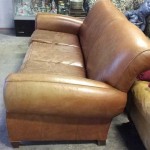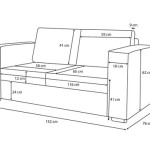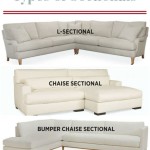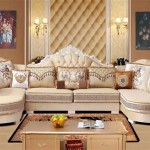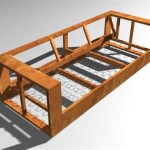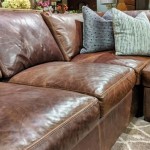Understanding Sectional Sofa Width: A Comprehensive Guide
Sectional sofas have become increasingly popular in modern homes due to their versatility, comfort, and ability to maximize seating space. One of the most crucial considerations when choosing a sectional sofa is its width. The width of a sectional sofa significantly impacts its fit within a room, its seating capacity, and overall aesthetic appeal. This article provides a detailed examination of sectional sofa width, exploring factors that influence it, common width ranges, and how to determine the optimal width for a specific living space.
The term "width" in the context of sectional sofas typically refers to the overall horizontal distance the sofa occupies when placed against a wall or within a designated area. This measurement is vital for space planning and ensuring the sectional integrates seamlessly into the room's existing layout. Understanding the factors that contribute to sectional sofa width is the first step in making an informed purchase.
Factors Influencing Sectional Sofa Width
Several factors directly affect the width of a sectional sofa. These include the number of sections, the dimensions of each section, and the style and design of the sofa itself. A larger number of sections will inevitably result in a greater width. Similarly, larger individual sections, such as oversized armless chairs or wide chaise lounges, will contribute to a wider overall footprint.
The design style also plays a crucial role. Sectionals with thick, rolled arms or extensive backrests will naturally be wider than those with sleek, minimalist designs. Modular sectionals, which allow for customizable configurations, can vary greatly in width depending on the arrangement chosen by the consumer.
The depth of the sectional, while a separate measurement, can also indirectly affect perceived width. A very deep sectional might visually dominate a space, even if its overall width is relatively modest. Therefore, it is important to consider both width and depth in tandem when assessing the suitability of a sectional for a particular room.
The presence of features like consoles with built-in storage or reclining mechanisms can also increase the width. These additions extend the overall horizontal reach of the sofa and should be factored into the width calculation. Ultimately, understanding these influencing factors allows consumers to better predict how a specific sectional sofa will fit within their homes.
An additional aspect is the orientation of the sectional. Left-facing or right-facing configurations, referring to the position of the chaise or extended portion, will affect how the width is perceived and how it interacts with the surrounding furniture and architectural elements in the room.
Common Sectional Sofa Width Ranges
Sectional sofa widths vary considerably, ranging from compact sizes suitable for apartments to expansive configurations designed for large living rooms or home theaters. Understanding common width ranges will help narrow down the options and make the selection process more manageable. Smaller sectional sofas, designed for smaller spaces, typically fall within the 80 to 90-inch width range. These are often two-piece sectionals with a simple L-shape or a small chaise lounge.
Mid-sized sectionals, which are suitable for moderately sized living rooms, generally range from 90 to 110 inches in width. These may include three to four sections, offering a balance of seating capacity and space efficiency. Larger sectionals, designed for spacious living areas, can exceed 110 inches in width and may extend to 130 inches or more. These configurations often include multiple seating sections, a large chaise lounge, and potentially additional features like consoles or reclining seats.
U-shaped sectionals, which provide seating on three sides, tend to be wider than L-shaped sectionals. Their width can easily surpass 120 inches, and in some cases, even reach 150 inches or more. Modular sectionals offer the greatest flexibility in terms of width, as the arrangement can be customized to fit specific needs and space constraints. These can range from relatively compact configurations to expansive setups spanning the entire length of a large room.
It's crucial to remember that these are general guidelines. Specific models within each category may deviate from these ranges. Always refer to the manufacturer's specifications for precise measurements before making a purchase. Furthermore, the shape and design of the sectional can influence how the width is perceived. A sectional with a low profile and clean lines might appear less bulky than a similarly sized sectional with a high back and plush cushions.
Determining the Optimal Sectional Sofa Width
Determining the optimal sectional sofa width requires careful consideration of the room's dimensions, layout, and intended use. The first step is to accurately measure the available space. Use a measuring tape to determine the length and width of the area where the sectional will be placed. Mark out the potential footprint of the sectional on the floor using masking tape or a similar material. This visual representation will help assess how well the sectional will fit and how it will affect the flow of traffic in the room.
Consider the placement of other furniture, such as coffee tables, side tables, and entertainment centers. Leave sufficient space for comfortable movement around the sectional and access to these other pieces. A general rule of thumb is to allow at least 18 inches of space between the sectional and other furniture, and at least 30 inches for major walkways. Also, account for architectural elements like doorways, windows, and fireplaces. Avoid blocking these features with the sectional, as this can disrupt the room's functionality and aesthetic appeal.
Consider the intended use of the sectional and the number of people who will typically use it. If the sectional is primarily for lounging and relaxation, a wider configuration with a large chaise lounge might be desirable. If it is primarily for seating guests, a more compact and space-efficient design might be more appropriate. Think about how the sectional will be used for activities like watching TV, reading, or entertaining. The ideal width should accommodate these activities comfortably without overwhelming the space.
The room's architectural style and existing décor should also be taken into account. A modern, minimalist room might benefit from a sleek, low-profile sectional with clean lines. A more traditional room might call for a sectional with more elaborate detailing and a wider, more substantial presence. The color and texture of the sectional should also complement the room's existing color scheme and materials. A sectional that is too large or too small for the room will disrupt the overall balance and harmony of the space.
Modular sectionals offer a degree of flexibility in terms of width. These sectionals consist of individual pieces that can be arranged in various configurations. This allows for customization to fit specific space constraints and preferences. Before purchasing a modular sectional, plan out the desired configuration and use the manufacturer's specifications to calculate the overall width. Ensure that the chosen configuration will fit comfortably within the available space and meet the intended seating needs.
Finally, consider the long-term implications of the sectional's width. Will the room's intended use or décor change in the future? Is there a possibility of moving the sectional to a different room? Choosing a sectional with a versatile width and configuration will allow for greater flexibility and adaptability in the long run. Remember that proper planning and accurate measurements are essential for selecting a sectional sofa that fits seamlessly into the living space and enhances its functionality and aesthetic appeal.
Online tools and room planning software can assist in visualizing how a sectional sofa of a specific width will look in a particular room. These tools allow users to input room dimensions, add furniture, and experiment with different sectional configurations to find the optimal layout. Consulting with an interior designer can also provide valuable insights and guidance in selecting the right sectional width and style for a specific home.

Angel Sar 86 In W Round Arm 3 Piece L Shaped Faux Leather Modern Sectional Sofa Gray Rivet Ornament Aa000350 The Home Depot

Noble House 7 Piece Gray Tweed Dark Brown Polyester 6 Seater L Shaped Sectional Sofa With Wood Legs 53207 The Home Depot

Cloud Sectional Sofa With Chaise Gray Home Furniture

Sectional Sofa Dimensions Sizes Guide In 2024 Oversized Couch Layout

The First Step To Finding Perfect Sectional Sofa Is Measuring Your Space Inspiration Sofas Living Room

Cream Corduroy Fabric Dark Green Modern Chaise Sectional Sofa

Chita Oversized Modular Sectional Fabric Sofa Set Extra Large L Shaped Couch With Reversible Chaise 112 Inch Width 4 Seat Storage Ottaman Beige Yahoo Ping

Mixoy Velvet U Shaped Sectional Sofa With Storage 7 Seater Modular Back Cushion Oversized Sleeper Couch Bed Convertible Couches For Living Room Dark Grey Com

Hudson 87w L Shaped Sectional Couch In Beige Herringbone Fabric Bushfurniturecollection Com

J E Home 76 7 In W Gray Velvet Full Size 3 Seats Sectional Sofa Bed With Usb Charging Port And Plug Gd W487s00008 The Depot



